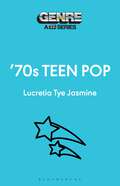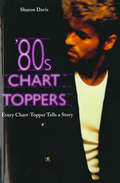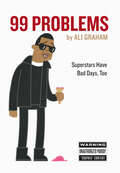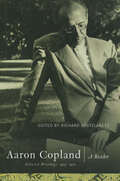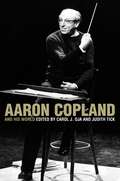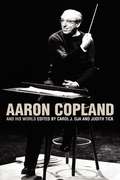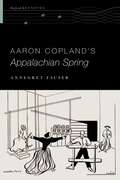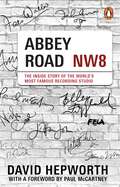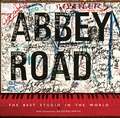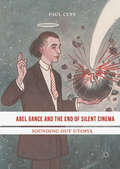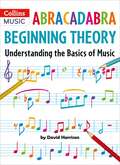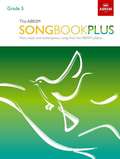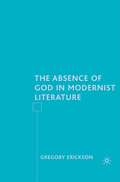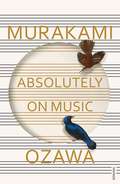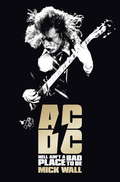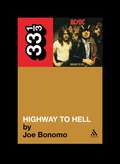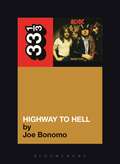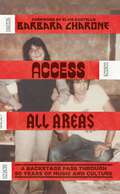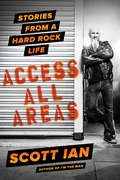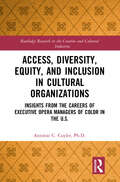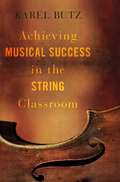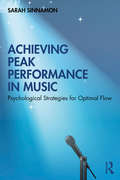- Table View
- List View
'70s Teen Pop (Genre: A 33 1/3 Series)
by Lucretia Tye JasmineTeen pop is a sub-genre of popular music marketed to tweens and teens. Its melodic yearning and veneer of sincerity appeal to an emerging romantic eroticism and autonomy. But tweens and teens buy music that isn't primarily marketed to them, too. Teen pop encompasses several kinds of musical styles, not limiting itself to just one-teen pop wants to play. During the 1970s, teen pop sometimes worked subversively, challenging the status quo it seemed to represent. Male pop stars such as David Cassidy were shown suggestively in popular magazines and female pop stars such as Cher had their own TV shows. Teen magazines, pin-ups, comics, films, and TV programs provided luscious visual stereo, promoting fashion styles, lingo, and dance moves, signaling individual identity but also community. The music provided a way for young people to believe they had something all their own, an authenticity experimenting with sexuality and social conduct, all dressed up in glitter and satin, blue jeans and boom boxes, torn fishnets and safety pins and, magically, their dreams. Cartoon pop and made-for-TV bands! Bubblegum pop! Glam! Hip hop! Hard rock and pop rock and stadium rock! Punk! Disco! Teen pop reinforced aspects of the counterculture it absorbed as the music kept playing-and playing back.Although it's very difficult to attain and maintain social progress and play it forward-there are so many tragedies-'70s Teen Pop examines how liberation and a true counterculture can be possible through music.
80s Chart-Toppers: Every Chart-Topper Tells a Story
by Sharon DavisThe '80s were a decade of musical change. As the '70s disco stranglehold was broken, rock, gay, dance and pop music competed with funk and soul, romantic ballads and political protest, computerised music and controversy. The glamour of costume, greasepaint and cross-dressing was put to good use by New Romantic groups like Spandau Ballet, Duran Duran, Soft Cell, Culture Club and the Human League, while the world also looked to Britain for the most exciting pop acts such as the multi-million-selling Wham!, Frankie Goes To Hollywood, Eurythmics and the Pet Shop Boys. Mainstream dance music was at its peak, spearheaded by Stock, Aitken and Waterman, and their stable of artists, including Kylie Minogue, Jason Donovan and Rick Astley, were all chart-topping names. From the USA came the artist of the decade, Michael Jackson, while Madonna and Whitney Houston provided the 'Girl Power' of the '80s. The decade also saw the philanthropic side of the music industry as the stars responded to famine in Ethiopia with the charity records 'Do They Know It's Christmas?' and 'We Are The World'. The'80s catered for all musical tastes, no matter how bizarre, and was far more eclectic than any other decade. From bubble-gum pop with Bucks Fizz to the stadium rock of Simple Minds,'80s Chart-Toppers brings a comprehensive year-by-year, month-by-month guide to the hottest sounds of the decade.
99 Problems: Superstars Have Bad Days, Too
by Ali GrahamPoor Superstar. All the money and fame in the world won&’t prevent him from having a bad hair day. Or stepping in gum. Or not being able to fit into skinny jeans, or watching helplessly as a scoop of ice cream falls from its cone. Or so an unnamed Superstar&’s life is ingeniously imagined in this very funny book. Inspired by but not based on Jay Z&’s monster hit &“99 Problems,&” illustrator Ali Graham riffs on what might be the real problems afflicting a world-famous music mogul who also happens to be married to the foremost diva of our time. Begun as a Tumblr, which went viral almost instantly, 99 Problems is a highly conceptual gift book showcasing 99 full-color illustrations of a cartoon character who looks just like a certain legendary rapper, and the often ordinary and sometimes fantastical things that happen to him. And that&’s where the book finds its hilarious, compulsive hook—in an age that worships celebrity and assumes, somewhat enviously, that fame and fortune can protect one from life&’s travails, what if that just weren&’t true? There&’s a surprising, underlying warmth here. Even when the author dips into flights of pop culture fantasy—Superstar on the bow of the Titanic; Superstar whipping up a bad batch alongside Walter White from Breaking Bad—the recognition of shared kinship is strong. It&’s a cartoon version of celebrity, but like the best cartoons, it&’s edgy and knowing, yet sweet, too.
Aaron Copland: A Reader: Selected Writings, 1923-1972
by Richard KostelanetzThis book presents a selection of the best writings, of the American composer and music legend Aaron Copland, on a wide variety of topics. It features excerpts from his correspondence and recommendations he wrote for other composers.
Aaron Copland: A Reader: Selected Writings, 1923-1972
by Richard Kostelanetz Steve SilversteinThis book presents a selection of the best writings, of the American composer and music legend Aaron Copland, on a wide variety of topics. It features excerpts from his correspondence and recommendations he wrote for other composers.
Aaron Copland and His World (The Bard Music Festival)
by Judith Tick Carol J. OjaAaron Copland and His World reassesses the legacy of one of America's best-loved composers at a pivotal moment--as his life and work shift from the realm of personal memory to that of history. This collection of seventeen essays by distinguished scholars of American music explores the stages of cultural change on which Copland's long life (1900 to 1990) unfolded: from the modernist experiments of the 1920s, through the progressive populism of the Great Depression and the urgencies of World War II, to postwar political backlash and the rise of serialism in the 1950s and the cultural turbulence of the 1960s. Continually responding to an ever-changing political and cultural panorama, Copland kept a firm focus on both his private muse and the public he served. No self-absorbed recluse, he was very much a public figure who devoted his career to building support systems to help composers function productively in America. This book critiques Copland's work in these shifting contexts. The topics include Copland's role in shaping an American school of modern dance; his relationship with Leonard Bernstein; his homosexuality, especially as influenced by the writings of André Gide; and explorations of cultural nationalism. Copland's rich correspondence with the composer and critic Arthur Berger, who helped set the parameters of Copland's reception, is published here in its entirety, edited by Wayne Shirley. The contributors include Emily Abrams, Paul Anderson, Elliott Antokoletz, Leon Botstein, Martin Brody, Elizabeth Crist, Morris Dickstein, Lynn Garafola, Melissa de Graaf, Neil Lerner, Gail Levin, Beth Levy, Vivian Perlis, Howard Pollack, and Larry Starr.
Aaron Copland and His World (PDF)
by Carol J. Oja Judith TickAaron Copland and His World reassesses the legacy of one of America's best-loved composers at a pivotal moment--as his life and work shift from the realm of personal memory to that of history. This collection of seventeen essays by distinguished scholars of American music explores the stages of cultural change on which Copland's long life (1900 to 1990) unfolded: from the modernist experiments of the 1920s, through the progressive populism of the Great Depression and the urgencies of World War II, to postwar political backlash and the rise of serialism in the 1950s and the cultural turbulence of the 1960s. Continually responding to an ever-changing political and cultural panorama, Copland kept a firm focus on both his private muse and the public he served. No self-absorbed recluse, he was very much a public figure who devoted his career to building support systems to help composers function productively in America. This book critiques Copland's work in these shifting contexts. The topics include Copland's role in shaping an American school of modern dance; his relationship with Leonard Bernstein; his homosexuality, especially as influenced by the writings of André Gide; and explorations of cultural nationalism. Copland's rich correspondence with the composer and critic Arthur Berger, who helped set the parameters of Copland's reception, is published here in its entirety, edited by Wayne Shirley. The contributors include Emily Abrams, Paul Anderson, Elliott Antokoletz, Leon Botstein, Martin Brody, Elizabeth Crist, Morris Dickstein, Lynn Garafola, Melissa de Graaf, Neil Lerner, Gail Levin, Beth Levy, Vivian Perlis, Howard Pollack, and Larry Starr.
Aaron Copland's Appalachian Spring (Oxford Keynotes)
by Annegret FauserAppalachian Spring, with music by Aaron Copland and choreography by Martha Graham, counts among the best known American contributions to the global concert hall and stage. In the years since its premiere-as a dance work at the Library of Congress in 1944-it has become one of Copland's most widely performed scores, and the Martha Graham Dance Company still treats it as a signature work. Over the decades, the dance and the music have taken on a range of meanings that have transformed a wartime production into a seemingly timeless expression of American identity, both musically and visually. In this Oxford Keynotes volume, distinguished musicologist Annegret Fauser follows the work from its inception in the midst of World War II to its intersections with contemporary American culture, whether in the form of choreographic reinterpretations or musical ones, as by John Williams, in 2009, for the inauguration of President Barack Obama. A concise and lively introduction to the history of the work, its realization on stage, and its transformations over time, this volume combines deep archival research and cultural interpretations to recount the creation of Appalachian Spring as a collaboration between three creative giants of twentieth-century American art: Graham, Copland, and Isamu Noguchi. Building on past and current scholarship, Fauser critiques the myths that remain associated with the work and its history, including Copland's famous disclaimer that Appalachian Spring had nothing to do with the eponymous Southern mountain region. This simultaneous endeavor in both dance and music studies presents an incisive exploration this work, situating it in various contexts of collaborative and individual creation.
AARON COPLAND'S APPALACHIAN SPRING OKS C (Oxford Keynotes)
by Annegret FauserAppalachian Spring, with music by Aaron Copland and choreography by Martha Graham, counts among the best known American contributions to the global concert hall and stage. In the years since its premiere-as a dance work at the Library of Congress in 1944-it has become one of Copland's most widely performed scores, and the Martha Graham Dance Company still treats it as a signature work. Over the decades, the dance and the music have taken on a range of meanings that have transformed a wartime production into a seemingly timeless expression of American identity, both musically and visually. In this Oxford Keynotes volume, distinguished musicologist Annegret Fauser follows the work from its inception in the midst of World War II to its intersections with contemporary American culture, whether in the form of choreographic reinterpretations or musical ones, as by John Williams, in 2009, for the inauguration of President Barack Obama. A concise and lively introduction to the history of the work, its realization on stage, and its transformations over time, this volume combines deep archival research and cultural interpretations to recount the creation of Appalachian Spring as a collaboration between three creative giants of twentieth-century American art: Graham, Copland, and Isamu Noguchi. Building on past and current scholarship, Fauser critiques the myths that remain associated with the work and its history, including Copland's famous disclaimer that Appalachian Spring had nothing to do with the eponymous Southern mountain region. This simultaneous endeavor in both dance and music studies presents an incisive exploration this work, situating it in various contexts of collaborative and individual creation.
Abbey Road: The Inside Story of the World’s Most Famous Recording Studio (with a foreword by Paul McCartney)
by David HepworthWith a foreword by Paul McCartney'We wanted to live the mystique of this legendary studio' Kanye West 'There are certain things that are mythical. Abbey Road is mythical' Nile RodgersMany people will recognise the famous zebra crossing. Some visitors may have graffitied their name on its hallowed outer walls. Others might even have managed to penetrate the iron gates. But what draws in these thousands of fans here, year after year? What is it that really happens behind the doors of the most celebrated recording studio in the world?It may have begun life as an affluent suburban house, but it soon became a creative hub renowned around the world as a place where great music, ground-breaking sounds and unforgettable tunes were forged - nothing less than a witness to, and a key participant in, the history of popular music itself.What has been going on there for over ninety years has called for skills that are musical, creative, technical, mechanical, interpersonal, logistical, managerial, chemical and, romantics might be tempted add, close to magic.This is for the people who believe in the magic.
Abbey Road: The Best Studio in the World
by Alistair LawrenceThe first photographic celebration of the most famous recording studio in the world, publishing in its 80th year. Unprecedented access to the Abbey Road archive - from Edward Elgar to the Beatles, Kate Bush to Elbow the most famous artists in the world have recorded here.This gorgeous book includes material on the artists, the engineers, the technology and the history of Abbey Road. It's an incredible document of cultural history, for anyone who values music and how it's made.
Abel Gance and the End of Silent Cinema: Sounding out Utopia
by Paul CuffThis book explores the creation and destruction of Abel Gance’s most ambitious film project, and seeks to explain why his meteoric career was so nearly extinguished at the end of silent cinema. By 1929, Gance was France’s most famous director. Acclaimed for his technical innovation and visual imagination, he was also admonished for the excessive length and expense of his productions. Gance’s first sound film, La Fin du Monde (1930), was a critical and financial disaster so great that it nearly destroyed his career. But what went wrong? Gance claimed it was commercial sabotage whilst critics blamed the director’s inexperience with new technology. Neither excuse is satisfactory. Based on extensive archival research, this book re-investigates the cultural background and aesthetic consequences of Gance’s transition from silent filmmaking to sound cinema. La Fin du Monde is revealed to be only one element of an extraordinary cultural project to transform cinema into a universal religion and propagate its power through the League of Nations. From unfinished films to unrealized social revolutions, the reader is given a fascinating tour of Gance’s lost cinematic utopia.
The ABRSM Songbook Plus, Grade 5: More classic and contemporary songs from the ABRSM syllabus (ABRSM Songbooks (ABRSM) Ser.)
by AbrsmA new addition to ABRSM's bestselling Songbook series, ABRSM Songbook Plus features an unrivalled choice of repertoire in a huge variety of styles that will inspire singers of all ages. An essential collection for those preparing for their Grade 5 exam or for anyone who loves to sing. The Grade 1, 2, 3 and 4 books are also available on request.
The Absence of God in Modernist Literature
by G. EricksonUses recent thought in continental philosophy and postmodern theology to interpret hidden and contradictory 'god-ideas' in texts of modernism such as Henry James's The Golden Bowl , Marcel Proust's In Search of Lost Time , James Joyce's Portrait of the Artist As a Young Man , and Arnold Schoenberg's opera Moses und Aron .
Absolutely on Music: Conversations with Seiji Ozawa (Vintage International Series)
by Haruki Murakami Jay Rubin Seiji OzawaAn unprecedented glimpse into the minds of two maestros.Haruki Murakami's passion for music runs deep. Before turning his hand to writing, he ran a jazz club in Tokyo, and the aesthetic and emotional power of music permeates every one of his much-loved books. Now, in Absolutely on Music, Murakami fulfills a personal dream, sitting down with his friend, acclaimed conductor Seiji Ozawa, to talk about their shared interest. They discuss everything from Brahms to Beethoven, from Leonard Bernstein to Glenn Gould, from record collecting to pop-up orchestras, and much more.
AC/DC: Hell Ain't a Bad Place to Be
by Mick WallMick Wall penetrates the closed world of Aussie rock legends AC/DC.AC/DC moved to Britain from Sydney in 1975, and soon set up a residency at London's Marquee Club. Their short hair (including the odd mullet), loud rock and attitude chimed well with the lingering pub rock and soon-to-be punk crowd. They weren't really a band for guitar solos, and singer Bon Scott was the original bike-riding, speed-snorting, fighting man. An ex-convict he lived life fast and short; he died in February 1980, just before BACK IN BLACK, their huge-selling album, took off and the second period of AC/DC (with Brian Johnson as lead vocalist) was ushered in. BACK IN BLACK has gone on to sell 45 million copies worldwide, and as the band have become a global phenomenon so their reclusiveness has increased. Mick Wall, the don of heavy metal writing, seeks to penetrate the wall around the Young brothers, and write the first authoritative, in-depth critical account of AC/DC.
AC DC's Highway To Hell (33 1/3)
by Joe BonomoReleased in 1979, AC/DC's Highway To Hell was the infamous last album recorded with singer Bon Scott, who died of alcohol poisoning in London in February of 1980. Officially chalked up to "Death by Misadventure," Scott's demise has forever secured the album's reputation as a partying primer and a bible for lethal behavior, branding the album with the fun chaos of alcoholic excess and its flip side, early death. The best songs on Highway To Hell achieve Sonic Platonism, translating rock & roll's transcendent ideals in stomping, dual-guitar and eighth-note bass riffing, a Paleolithic drum bed, and insanely, recklessly odd but fun vocals. Joe Bonomo strikes a three-chord essay on the power of adolescence, the durability of rock & roll fandom, and the transformative properties of memory. Why does Highway To Hell matter to anyone beyond non-ironic teenagers? Blending interviews, analysis, and memoir with a fan's perspective, Highway To Hell dramatizes and celebrates a timeless album that one critic said makes "disaster sound like the best fun in the world."
AC DC's Highway To Hell (33 1/3)
by Joe BonomoReleased in 1979, AC/DC's Highway To Hell was the infamous last album recorded with singer Bon Scott, who died of alcohol poisoning in London in February of 1980. Officially chalked up to "Death by Misadventure," Scott's demise has forever secured the album's reputation as a partying primer and a bible for lethal behavior, branding the album with the fun chaos of alcoholic excess and its flip side, early death. The best songs on Highway To Hell achieve Sonic Platonism, translating rock & roll's transcendent ideals in stomping, dual-guitar and eighth-note bass riffing, a Paleolithic drum bed, and insanely, recklessly odd but fun vocals. Joe Bonomo strikes a three-chord essay on the power of adolescence, the durability of rock & roll fandom, and the transformative properties of memory. Why does Highway To Hell matter to anyone beyond non-ironic teenagers? Blending interviews, analysis, and memoir with a fan's perspective, Highway To Hell dramatizes and celebrates a timeless album that one critic said makes "disaster sound like the best fun in the world."
Access All Areas: A Backstage Pass Through 50 Years of Music And Culture
by Barbara CharoneFirst as a journalist and then a publicist at Warner Brothers Records for nearly twenty years, Barbara Charone has experienced, first-hand, the changes in the cultural landscape. Access All Areas is a personal, insightful and humorous memoir packed with stories of being on the cultural frontline, from first writing press releases on a typewriter driven by Tip Ex, then as a press officer for heavy metal bands taking the bus up to Donnington Festival with coffee, croissants and the much more popular sulfate. To taking on Madonna, an unknown girl from Detroit, and telling Smash Hits 'you don't have to run the piece if the single doesn't chart', and becoming a true pioneer in music, Charone continues to work with the biggest names in music, including Depeche Mode, Robert Plant, Foo Fighters and Mark Ronson at her agency MBCPR.The story of how a music-loving, budding journalist from a Chicago suburb became the defining music publicist of her generation, Access All Areas is a time capsule of the last fifty years, told through the lens of music.
Access All Areas: Stories from a Hard Rock Life
by Scott IanEntertaining, crazy, and hilarious stories from Scott Ian of AnthraxScott Ian, famous for cofounding legendary thrash metal band Anthrax and only slightly less so for his iconic beard, has done and seen a lot in his decades of touring. Those of you who have read Scott's memoir I'm the Man may know the history of the band, but Access All Areas divulges all the zany, bizarre, funny, and captivating tales of what went on when the band wasn't busy crafting chart-topping albums.In his more than thirty years immersed in the hard rock scene, Scott has witnessed haunting acts of depravity backstage, punched a legendary musician, been a bouncer at an exclusive night club, guest-starred with Anthrax on Married with Children, invaded a fellow rock star's home, played poker professionally, gone on a non-date with a certain material girl, appeared on The Walking Dead, and much more.Access All Areas allows its readers to do just that. With humor, candor, hindsight, and writing chops that would make Stephen King jealous (nope, not even on Bizarro world), Scott Ian takes his fans along for the ride at all the parties, hot spots, and behind-the-scenes shenanigans they will never hear about from anyone else. And none of it would have happened without a bit of divine inspiration from KISS. (No, seriously. Read chapter two.) Best of all, Scott seemingly lacks the ability to be embarrassed, making Access All Areas howlingly funny, self-deprecating, and every bit as brash and brazen as one would expect from one of the original architects of speed metal.
Access, Diversity, Equity and Inclusion in Cultural Organizations: Insights from the Careers of Executive Opera Managers of Color in the US (Routledge Research in the Creative and Cultural Industries)
by Antonio C. CuylerAnalyzing the lack of diversity among opera executives, this book examines the careers of executive opera managers of color in the U.S. By interrogating the impact of race on arts managers’ careers, the author contemplates how opera might attract and retain more racially diverse arts managers to ensure its future. With a focus on the U.S., research is contextualized via qualitative data to explore, enhance, and institutionalize access, diversity, equity, and inclusion (ADEI) in the opera industry. In a revealing series of expert-conducted interviews, the author poses illuminating questions, such as: what if an inability to recruit and retain diverse executives is the primary source of opera’s challenges? if more racially diverse opera executives existed, would the art form persist in struggling to find its place in contemporary society? from where will the next generation of diverse opera managers emerge? As the magnitude of the global diversity problem grows within the creative and cultural industries, this book serves as a guide for Arts Management practitioners and students who may view their class, different ability, ethnicity, gender, race, or sexual orientation as a liability in their pursuit of executive careers.
ACHIEV MUSIC SUCCESS IN STRING CLASSR C
by Karel ButzAchieving Musical Success in the String Classroom describes a fully pragmatic pedagogical approach toward developing complete musicianship in beginning through advanced level string players by incorporating the ideas of Mimi Zweig, Paul Rolland, and Shinichi Suzuki. Author Karel Butz's philosophical assumptions are explained regarding the structure and purpose of string teaching contributing to a high level of musical artistry among students. Introductory through advanced string concepts relating to instrument set-up, posture, left and right hand development, music theory, aural skills, assessment procedures, imagery in playing, the development individual practice and ensemble skills, and effective rehearsal strategies are explained in a sequential approach that benefit the classroom teacher and student. In addition, several score examples, sample lesson plans, grading rubrics as well as videos of Butz demonstrating his pedagogical ideas and techniques with musicians are included.
Achieving Musical Success in the String Classroom
by Karel ButzAchieving Musical Success in the String Classroom describes a fully pragmatic pedagogical approach toward developing complete musicianship in beginning through advanced level string players by incorporating the ideas of Mimi Zweig, Paul Rolland, and Shinichi Suzuki. Author Karel Butz's philosophical assumptions are explained regarding the structure and purpose of string teaching contributing to a high level of musical artistry among students. Introductory through advanced string concepts relating to instrument set-up, posture, left and right hand development, music theory, aural skills, assessment procedures, imagery in playing, the development individual practice and ensemble skills, and effective rehearsal strategies are explained in a sequential approach that benefit the classroom teacher and student. In addition, several score examples, sample lesson plans, grading rubrics as well as videos of Butz demonstrating his pedagogical ideas and techniques with musicians are included.
Achieving Peak Performance in Music: Psychological Strategies for Optimal Flow
by Sarah SinnamonAchieving Peak Performance in Music: Psychological Strategies for Optimal Flow is a unique and comprehensive exploration of flow in music performance. It describes the optimal performance experiences of great musicians and outlines ten psychological steps that can be implemented to facilitate and enhance optimal experience. Achieving Peak Performance in Music reveals strategies used by experts to prepare themselves emotionally, cognitively, and physically for performance. Combining this information with research carried out amongst professional performers and knowledge gained from decades of study and research by psychologists on how to achieve a positive experience, the book guides readers on a pathway towards optimal performance. Using everyday language, it presents invaluable practical guidance and a toolbox of strategies to help with all aspects of performance, including memorisation, visualisation, focus, performance anxiety, thought management, motivation, and pre-performance routines. Based on psychological research, the book shares practical knowledge invaluable to music students, parents, and amateur and professional musicians. The strategies on performance provided are applicable to every type of performance, from a student exam to a gig or a concert, making Achieving Peak Performance in Music a significant resource for anyone looking to achieve peak performance.
